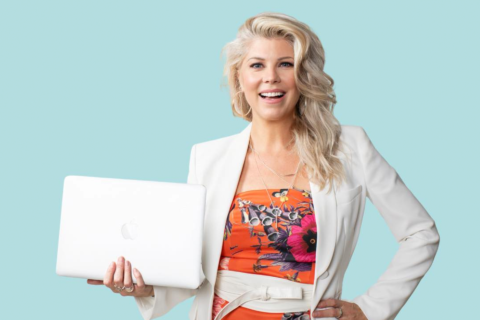The notion of a “sexy” brand is an elusive beast. That’s because there’s a big difference between a sexy brand and a brand that attempts to use sex to sell itself. A sexy brand is attractive and appealing to people. Every aspect of its brand personality is effortless, authentic, modern, tasteful, charismatic.
As KISSmetrics explains, “Today, if you look at the brands that are doing really well — the ones that are really crushing it — you’ll see that many of them don’t stop at remarkable advertising. They make a remarkable product. The product isn’t just good. It’s sexy.”
On the other hand, brands that trade on the old “sex sells” mantra are one-in-a-billion, as tired and cringe-worthy as the old cliché.
You know what I’m talking about. The sexed-up model becomes the focal-point, while the brand might as well be anonymous. How many purchases have you made because there’s a scantily-clad person marketing the brand? If you’re smart, you instantly know they’re trying to manipulate you.
Besides, branding isn’t about ads. It’s about every aspect of what you do. I say you because today’s entrepreneur oftentimes begins as a solopreneur, getting their ideas out there in an effort to attract business prospects. In that sense, the brand is you.
I discussed this concept in an article on agile branding. Branding is the body of your business. It’s the meat, the reality of who and what your business is. Your brand will only be sexy if you work hard at nailing the essentials of building a good body. Your final output will be toned and sleek, because you put in the time and energy to get there.
Sexy from the start
A prime example of a sexy brand is Nasty Gal. This is an interesting case, a branding saga worth noting.
Nasty Gal was founded in 2006 by Sophia Amoruso. From the start, all Nasty Gal did was sell vintage clothing online. Amoruso’s first sale was a garment she shoplifted. So how did the brand go from pushing second hand clothes on EBay to earning more than $100 million in revenue by 2014?
The name Nasty Gal comes from a 1975 album by funk singer Betty Davis. Like Nasty Gal’s clothing, the name is second-hand. When you’re thinking of a name, don’t be afraid to become creatively inspired.

Pull from sources that represent the image you want to project. Hopefully, that image is true to who you are and resonates with your audience. Is Amoruso a nasty gal? Well, to her the name represents a spirit of independence, and defiance that her and her target audience share.
To find out what worked, Amoruso took an iterative approach. She says, “If one thing worked, I did more of it. If it didn’t work, I didn’t beat my head against the wall to make something happen. It all centered around what my customers were responding to.” She tapped directly into her audience, using her instinct and personal experience to refine the brand image, then taking customer input to run with the winning look. She used social media quite a bit to accomplish this.
When it comes to social media, according to the University of Alabama at Birmingham, “User-generated data is invaluable for market research, gauging brand health, campaign optimization, and measuring satisfaction.” If you don’t have any data, use direct audience input.
To build a living, breathing brand that resonates with your audience, make adjustments based on what works and what doesn’t. Do this is in real-time. Amoruso’s number one piece of business advice is, “Fail fast. Learn faster. Adjust accordingly.”
Amoruso has since stepped down from Nasty Gal and is now rocking her own brand, #GirlBoss. It’s who she is. She wrote a book titled #GirlBoss, and now Netflix is coming out with a show about her. #GirlBoss is her personal brand, and it’s sexy because it’s who she is.
Rapid brand prototyping
Prototyping is the process of crafting brand image, messages, strategy, and ultimately, identity. The old way of building a brand prototype was to start with research, move on to strategy, and then creative development. But this isn’t quick and it’s not organic. It’s calculated, slow, and decidedly un-sexy.
Pin down visuals and messages at the same time as you’re developing strategy, as well as researching a competitor and your target audience. Together, all these facets will influence each other.
Are you working with partners who handle different areas of the business? Include all decision-makers at the same time in a parallel process.

While you’re working on crafting your brand, consider the psychology behind developing brand loyalty. The following things influence people’s perception of your brand:
-
Color. Colors and lighting create moods and feelings the audience associates with your brand
-
Wording. Content should explain the process and success of what you have to offer; people prefer expensive-sounding names for products
-
Inclusiveness. Create a sense of belonging and achievement with your messages
-
Experience. Your brick-and-mortar and online presence should manifest an experience mirroring your brand
Doing everything at the same time might seem messy, but organisms have a tendency to organize. It’s how our brains work. Out of the refining fire that is the rapid approach comes the sexy beast that is your brand.
Branded space
Each touchpoint of your business must reflect your brand. Your brand should be clear and consistent from your company website to your physical location, events, social media, technology, etc.
How do you accomplish this? It comes down to the smallest details. As Square points out, even your point-of- sale (POS) system should work hand in hand with what your business does: “A busy cafe might have different needs than a clothing boutique, and a small business POS system that works for a plumber understandably might not make sense for a fitness studio.”
The technology you use and how you create experiences for customers informs how they perceive your brand. Choose the technology, furniture, décor, colors, and other essentials best suited for what you do.
Founder and CEO of social ecommerce network OpenSky, John Caplan, points out, “The role of a physical space is very powerful in brand building. Businesses should think twice about how they can better capitalize on the full potential of their spaces.”
Starbucks excels at this by recognizing that the coffee shop crowd might just want to hang out, surf the internet, and drink a cup. So they installed comfortable chairs, offered free WiFi, a fireplace and made the shop space inviting.
People will always value something beyond the basic function of your product. Where does your brand fit in their social livelihood? Figure that out, and arrange your physical and digital space accordingly.
Image appeal
When it comes down to it, your visual presence is the most important tool for sexy branding. In the early days, Amoruso had her friends pose as models for Nasty Gal. This speaks to her DIY approach. If you’re designing a product, how you design your product is a part of image appeal. Think of Apple’s sleek and minimalistic look.
To showcase your brand’s feel, choose a primary color palette that captures that feel. Consider the psychology behind colors. Choose your other brand images and icons accordingly. The sexiness you achieve will be a matter of smooth congruency with your primary color palette, secondary color palette, and images.
Good photos are absolutely essential to your image. Match the tone of your photos with your brand colors. Use professional photos, and don’t be afraid to use images that aren’t direct—if a photo captures the feel of your brand’s message, it’s ideal. If you’re struggling to find the right images, there are a ton of them available for free online.
Put your logo on every social media and website page. Post content consistent with your brand identity—maintain an image presence. Think of this like your brand is a person purely expressing their values online. You’ll be that much closer to sexy when people can tell you’re authentic.
This article has been edited.
Daniel Matthews is a freelance writer from Boise, Idaho with a passion for changing the world through writing and sharing ideas. His expertise includes entrepreneurship, technology, startups, and marketing. Connect with @danielmatthews0 on Twitter.
© YFS Magazine. All Rights Reserved. Copying prohibited. All material is protected by U.S. and international copyright laws. Unauthorized reproduction or distribution of this material is prohibited. Sharing of this material under Attribution-NonCommercial-NoDerivatives 4.0 International terms, listed here, is permitted.













